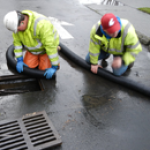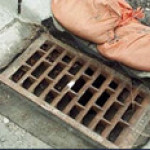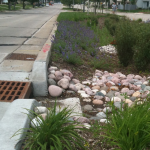03-12-2025 - Qualified SWPPP Practitioner - QSP - Online, Live
Training Provider: Global Environmental Network, Inc
Dates: WE Mar 12, TH Mar 13 from 8:30am to 5:00pm US/Pacific
Location: Online, Live
 10 reviews
10 reviews | TICKET TYPE | PRICE | QUANTITY |
|---|---|---|
|
One Workshop Ticket more info» | $325.00 | |
Or call: 954-400-0595 | ||
Why Should You Take This Qualified SWPPP Practitioner (QSP) Course?
Rainfall can cause many problems for construction sites. Runoff water can flow through stockpiled construction material or across disturbed soil areas and pick up pollutants or sediment. The runoff typically ends up in streams or rivers that flow to the ocean. With critical changes in requirements under the new EPA Construction General Permit, construction site Stormwater Pollution Prevention Plans (SWPPPs) must be developed following the requirements of the EPA or applicable state and describe the specific conditions of the site and plans for development.
California State Water Resources Control Board - In California, dischargers whose projects disturb one or more acres of soil or whose projects disturb less than one acre but are part of a larger common plan of development that in total disturbs one or more acres, are required to obtain coverage under the General Permit for Discharges of Storm Water Associated with Construction Activity - Construction General Permit Order 2009-0009-DWQ. Construction activity subject to this permit includes clearing, grading and disturbances to the ground such as stockpiling, or excavation, but does not include regular maintenance activities performed to restore the original line, grade, or capacity of the facility.
The Construction General Permit requires the development and implementation of a Storm Water Pollution Prevention Plan (SWPPP). The SWPPP should contain a site map(s) which shows the construction site perimeter, existing and proposed buildings, lots, roadways, storm water collection and discharge points, general topography both before and after construction, and drainage patterns across the project. The SWPPP must list Best Management Practices (BMPs) the discharger will use to protect storm water runoff and the placement of those BMPs. Additionally, the SWPPP must contain a visual monitoring program; a chemical monitoring program for "non-visible" pollutants to be implemented if there is a failure of BMPs; and a sediment monitoring plan if the site discharges directly to a water body listed on the 303(d) list for sediment. Section A of the Construction General Permit describes the elements that must be contained in a SWPPP.
Course Duration: Take this 2-day Qualified SWPPP Practitioner (QSP) course to become the stormwater professional responsible for implementing the SWPPP. The Qualified SWPPP Practitioner (QSP) course is an overview and review of necessary forms and regulations governing pollution caused by stormwater, especially implementing a Stormwater Pollution Prevention Plan (SWPPP). This course describes the SWPPP development process and provides helpful guidance and tips for implementing an effective Stormwater Pollution Prevention Plan on your construction site. A more detailed explanation of what is covered in this class can be found in our course syllabus.
What is the difference between a QSD and a QSP?
A QSP implements a SWPPP plan while a QSD prepares it. A QSD can perform the same functions as a QSP except a QSP cannot perform the QSD certification items.
How do I become a QSD or QSP?
To become qualified as a QSP/QSD and receive a certificate you will need to take training and the exam and have received a secondary certificate of underlying (pre-requisite) certification after taking the exam.
Here are the steps:
1) Take QSP Training Course
2) Go to the Office of Waters Program (OWP) Website and Register (create login) and pay a $125.00 fee (good for 2 years). Click here to get started.
3) Provide proof of pre-requisite qualification or registration (in addition to QSP training). Click here to view a list of accepted pre-requisite programs from the State Water Resources Control Board's Storm Water Program.
4) Take and pass the online test at the OWP Website. Your certificate will be emailed to the email address you have provided.
*Note: You can take the exam before you have completed the pre-requisite program.
QSP Exam - (maximum 2 hours allowed). To become a QSP, you must pass the timed 2-hour QSP exam with a score of better than 70%.
To learn more about the QSP certification process, visit https://www.casqa.org/resources/qsp-qsd-qualification
Renewal Fees:
Renew before current expiration date: $95.00; Renew after current expiration date: $115.00. Upon successful renewal, the system will send an updated QSP/QSD certificate with the new expiration date.
Please Note: In class, information will be covered about The New Storm Water Pollution Prevention (SWPPP) Regulations: On September 2, 2009, the State Water Resources Control Board (State Board) adopted Order No. 2009-009, National Pollutant Discharge Elimination Program (NPDES) General Permit No. CAS000002 IS, 'Waste Discharge Requirements for Storm Water Runoff Associated with Construction and Land Disturbance Activities.'
DAY ONE
Introduction and Course Agenda
Module 1: Training Overview and Regulations
1. Agenda and Learning Objectives
2. Acronyms and Key Terminology
3. History and Background of Regulations
4. General Permit Structure
5. The Fact Sheet
6. Significant Changes
7. The Order
8. Activities Covered Under the CGP
9. Activities Not Covered Under the CGP
10. The Attachments
11. The CSMP
12. Review Exercises
Module 2: Erosion Theory
1. Agenda and Learning Objectives
2. The Erosion Process
3. Turbidity v. Sedimentation
4. Tools
5. Erosion Prediction Models
6. Review Exercises
Module 3: SWPPP Implementation
1. Agenda and Learning Objectives
2. Resources
3. SWPPP Requirements
a. Traditional Projects - Section XIV
b. LUPs – Per Attachment A
c. SWPPP Basics
4. BMP Implementation and Maintenance
5. Inspection Maintenance & Repair
a. Traditional Projects
b. LUPs - Minimums per Attachment A
c. Recommended Inspection Tools
6. Rain Event Action Plan (REAP)
7. Active Treatment Systems (ATS)
8. Review Exercises
DAY TWO
Module 4: Construction Site Monitoring
Section 1: Site Monitoring
1. Risk and Monitoring
2. Construction Site Monitoring Plans and Monitoring and Reporting Programs
3. Description of Monitoring Requirements
4. Factors to Consider in Selecting Monitoring Locations
5. Water Quality Parameters
6. Sampling Methodologies
7. Measurement and Analysis
8. Quality Assurance and Quality Control
9. Preparing for and Conducting Sampling
10. Interpreting Your Results
Section 2: Advanced (Active) Treatment Systems – ATS
1. Permit Required Monitoring
2. ATS Visual Monitoring
3. Maintaining Monitoring Records
4. ATS Reporting
5. Review Exercises
Module 5: Reporting
1. Agenda and Learning Objectives
2. Using SMARTS
a. Roles and responsibilities
3. Reporting
a. Requirements
b. Timing
4. NAL Exceedance Reports
5. NEL Violation Reports
6. Annual Reports
7. Review Exercises
| COURSE LOGISTICS | |
|---|---|
| Certificates | 4-7 days after course completion |
| Food | Breakfast provided |
Below are the most recent student reviews for previous Qualified SWPPP Practitioner - QSP Courses. All reviews are from people who registered for and attended the course.
 (
4.1
out of 5 stars -
10
student reviews)
(
4.1
out of 5 stars -
10
student reviews)
 attended on June 10, 2022
attended on June 10, 2022
The instructor was good, I felt like the class could be improved but was overall satisfied with the information i gained from the experience  attended on April 12, 2019
attended on April 12, 2019
Great! Knowledgeable instructor.  attended on August 24, 2018
attended on August 24, 2018
The instructor was very qualified and knew the subject matter very well.  attended on June 22, 2016
attended on June 22, 2016
Bruce was very experienced, clear, knowledgeable, and funny.  attended on February 12, 2016
attended on February 12, 2016
The Instructor (Bruce) was very knowledgeable in his field. He kept the class interested with the subject, since at times it could be very dry material. Hopefully the material that was covered, and the studying that he recommended will help me with the QSP exam.  attended on September 29, 2014
attended on September 29, 2014
Class was good however the teacher needs to give more breaks. We went in 4 intervals without a break.  attended on September 29, 2014
attended on September 29, 2014
It would have been a 5 star but to lecture for 4 hours straight is very bad, even for those classroom pro's that can sit all day. It is my experience that a person can only absorb 4050 mins. of instruction at a time. That's why they give breaks to students.
The information was great.  attended on September 15, 2014
attended on September 15, 2014
Very informative and detailed but alot of information to consume in such a short period of time.  attended on August 18, 2014
attended on August 18, 2014
He was very knowledgeable, but was extraordinarily uninteresting to listen to. The "Who Wants to Be a Millionaire" questions were a nice touch, but that was only a small portion of the 16 hours we had to sit through.  attended on August 18, 2014
attended on August 18, 2014
Great class, a lot of information more than what I was expecting awesome experience. This course is conducted as a live instructor-led webinar. Further details will be provided to you prior to the course.
WE Mar 12, TH Mar 13 from 8:30am to 5:00pm US/Pacific

Global Environmental Network, Inc (GENI) has been providing Health and Safety Engineering, Consulting, and Training services since 1992, and has grown tremendously in presence in the municipal, utilities, oil, gas, construction and engineering sectors. GENI's ability to integrate customized, project specific services while constantly evaluating the services ensures our ability to meet or exceed the most rigorous guidelines available. With multiple course types and talented instructors with diverse backgrounds, GENI is your source for high quality safety training in California.

Questions? 954-400-0595


